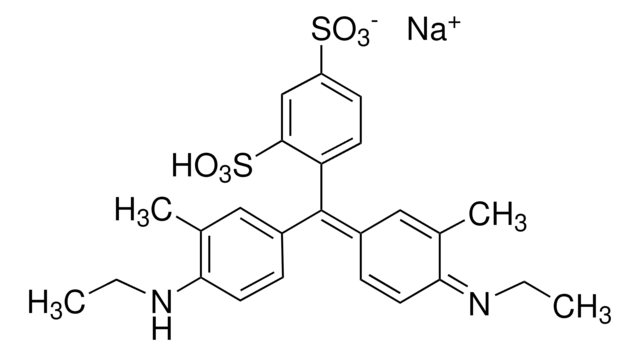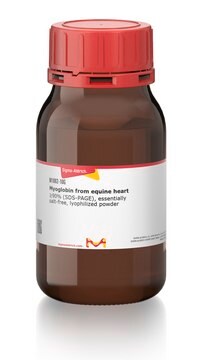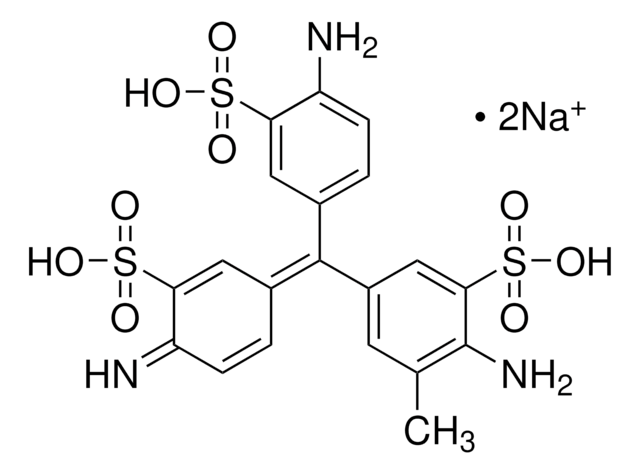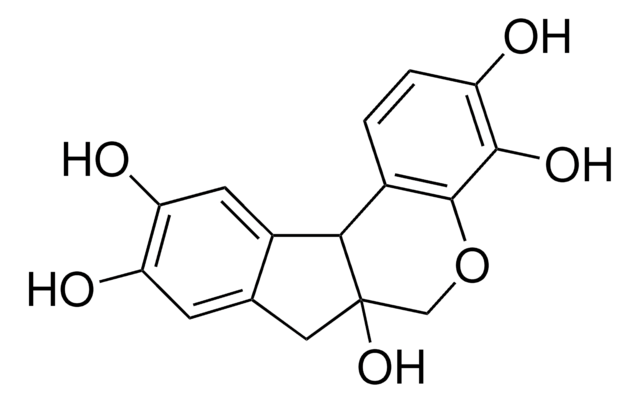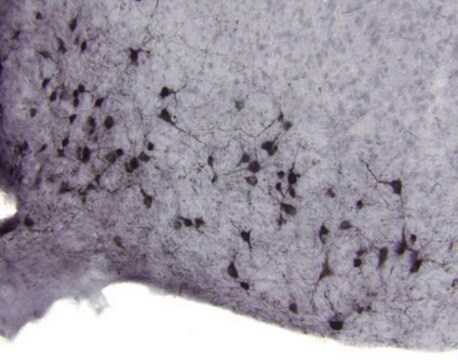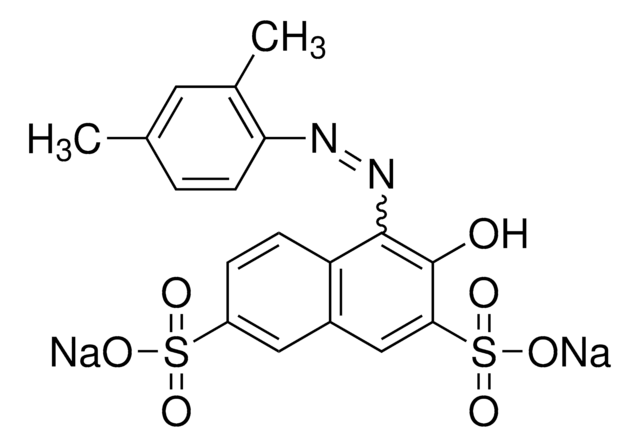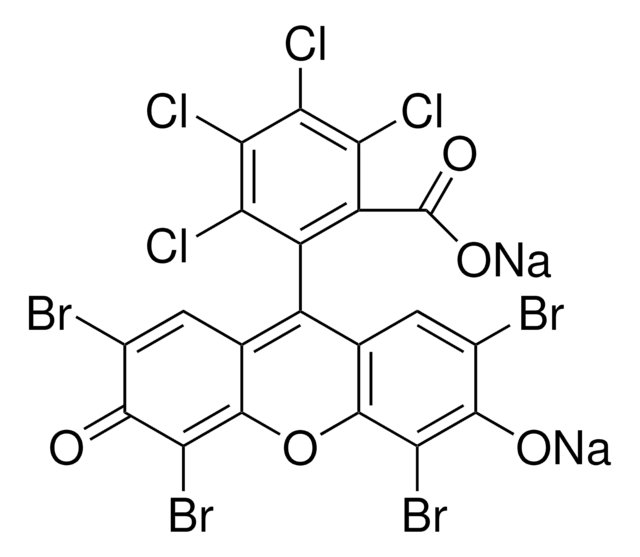O7252
Orange G
Dye content, ≥80%, certified by the Biological Stain Commission, powder
Sinónimos:
1-Phenylazo-2-naphthol-6,8-disulfonic acid disodium salt, 7-Hydroxy-8-phenylazo-1,3-naphthalenedisulfonic acid disodium salt, Acid Orange 10, Wool Orange 2G
About This Item
Productos recomendados
Nombre del producto
Orange G, certified by the Biological Stain Commission
grado
certified by the Biological Stain Commission
Nivel de calidad
Formulario
powder
composición
Dye content, ≥80%
técnicas
microbe id | staining: suitable
color
orange to very dark orange
solubilidad
water: 1 mg/mL, clear
aplicaciones
diagnostic assay manufacturing
hematology
histology
temp. de almacenamiento
room temp
cadena SMILES
[Na+].[Na+].Oc1ccc2cc(cc(c2c1\N=N\c3ccccc3)S([O-])(=O)=O)S([O-])(=O)=O
InChI
1S/C16H12N2O7S2.2Na/c19-13-7-6-10-8-12(26(20,21)22)9-14(27(23,24)25)15(10)16(13)18-17-11-4-2-1-3-5-11;;/h1-9,19H,(H,20,21,22)(H,23,24,25);;/q;2*+1/p-2/b18-17+;;
Clave InChI
HSXUHWZMNJHFRV-QIKYXUGXSA-L
¿Está buscando productos similares? Visita Guía de comparación de productos
Descripción general
Aplicación
Idoneidad
Código de clase de almacenamiento
11 - Combustible Solids
Clase de riesgo para el agua (WGK)
WGK 3
Punto de inflamabilidad (°F)
Not applicable
Punto de inflamabilidad (°C)
Not applicable
Equipo de protección personal
Eyeshields, Gloves, type N95 (US)
Elija entre una de las versiones más recientes:
¿Ya tiene este producto?
Encuentre la documentación para los productos que ha comprado recientemente en la Biblioteca de documentos.
Los clientes también vieron
Nuestro equipo de científicos tiene experiencia en todas las áreas de investigación: Ciencias de la vida, Ciencia de los materiales, Síntesis química, Cromatografía, Analítica y muchas otras.
Póngase en contacto con el Servicio técnico

